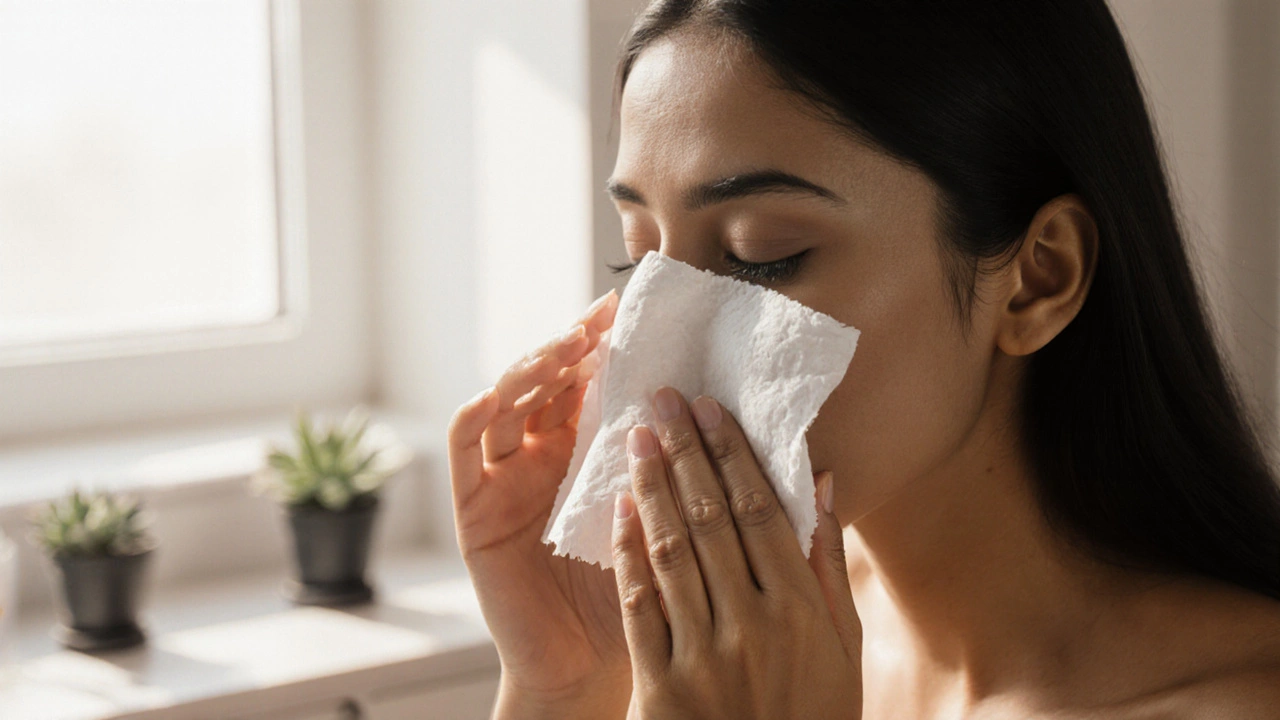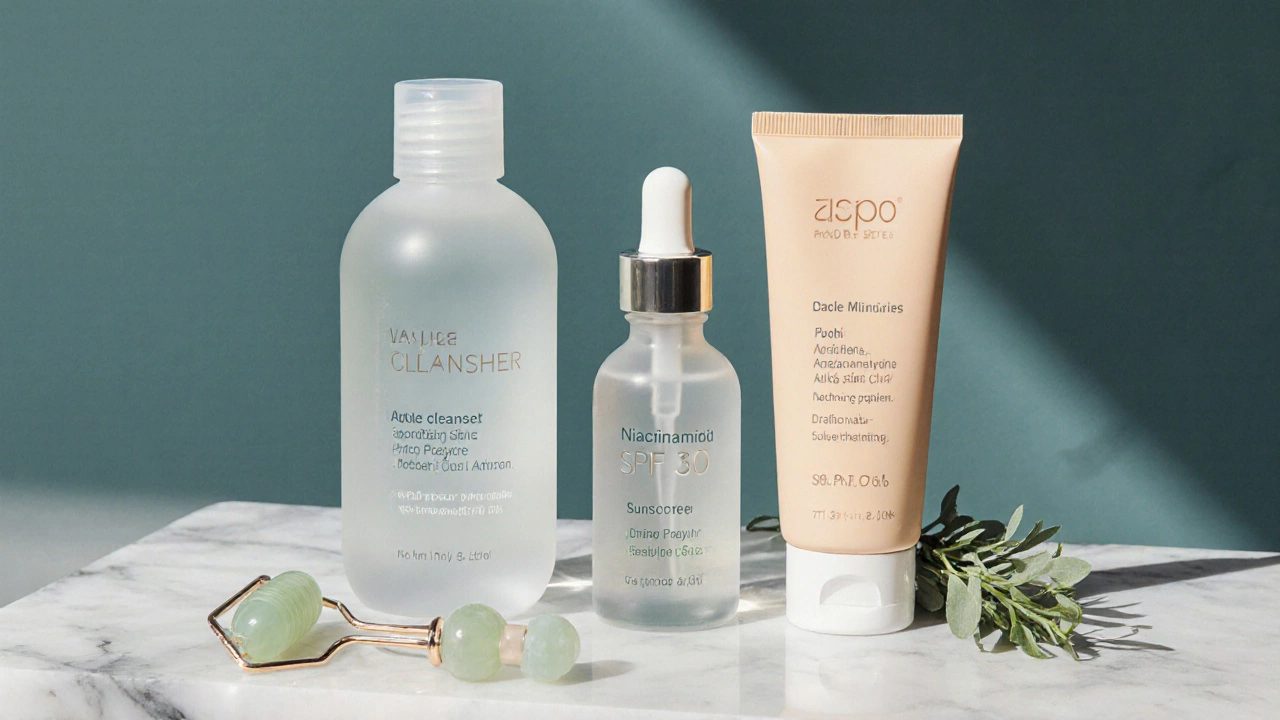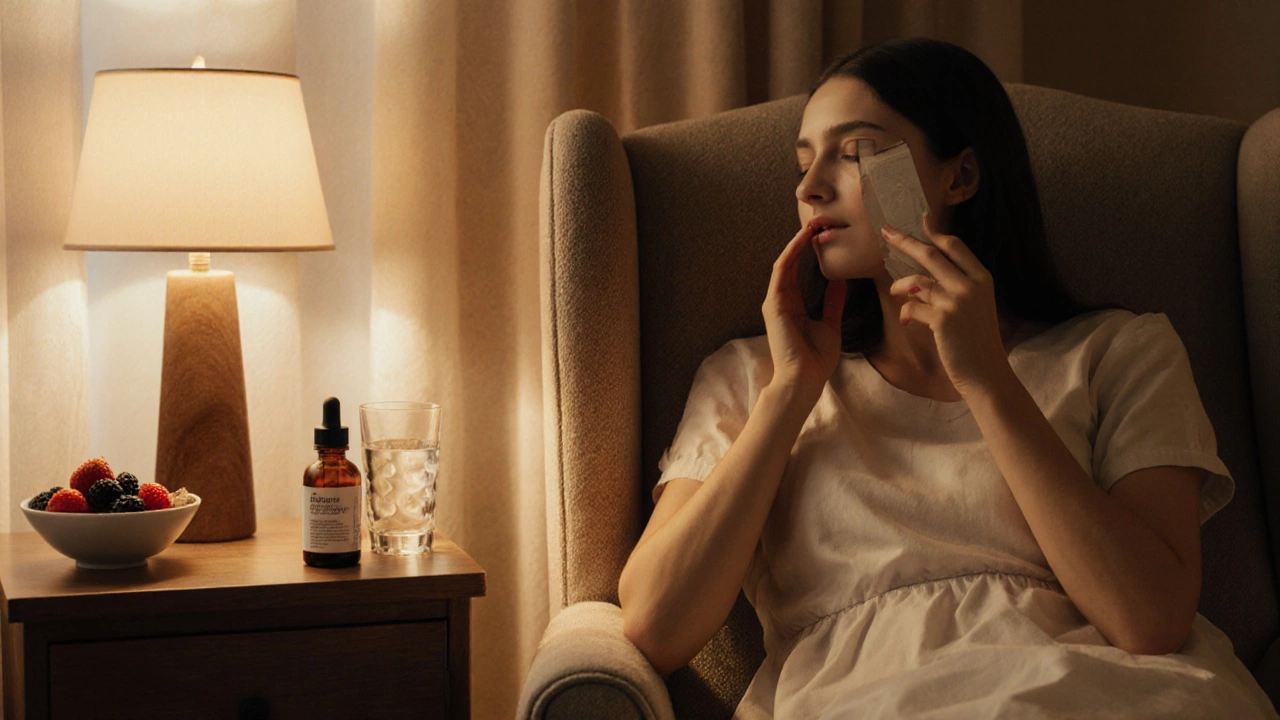
Skin Type & Ingredient Matcher
1. Identify Your Skin Type
Select the skin type that best describes yours:
Oily
Shiny, prone to breakouts
Dry
Tight, flaky, rough
Combination
Oily T-zone, dry cheeks
Sensitive
Prone to redness, irritation
2. Recommended Ingredients
3. Skincare Routine Overview
Your daily routine should include:
- Cleanse with a product suited to your skin type
- Treat with targeted serums based on your concerns
- Protect with broad-spectrum SPF 30+ daily
When people talk about flawless skin is a clear, even‑toned complexion with little to no breakouts, fine lines, or redness, they’re usually picturing that fresh‑faced glow you see on magazine covers. Getting there isn’t magic-it’s a blend of smart product choices, daily habits, and a little science. Below you’ll find the exact steps you can start today to move your skin from “meh” to “wow”.
Key Takeaways
- Identify your skin type first - everything else builds on that.
- Stick to a three‑step core routine (cleanse, treat, protect) morning and night.
- Pick actives that match your concerns: niacinamide for oil control, hyaluronic acid for hydration, salicylic acid for acne.
- Support skin from the inside with balanced diet, hydration, and 7‑9 hours of sleep.
- Add exfoliation and targeted treatments 1‑3 times weekly, not daily.
Understand Your Skin Type
Before you buy anything, figure out whether your skin is oily, dry, combination, or sensitive. The easiest way is the blotting test: after cleansing, wait 30 minutes, then press a tissue onto your forehead, nose, and chin. If the paper lights up with oil, you’re on the oily side; if it stays mostly clean, you’re likely dry or normal.
Knowing this matters because the cleanser removes dirt, excess sebum, and makeup without stripping the skin’s natural barrier you choose should balance cleaning power with moisture retention. For oily skin, a gel‑based or foaming formula with salicylic acid works. For dry skin, a cream‑based cleanser with ceramides is kinder.
Build a Core Skincare Routine
Consistency beats complexity. A solid routine only needs three steps, performed twice daily.
- Cleanse: Use a cleanser appropriate for your skin type. Massage gently for 60 seconds, then rinse with lukewarm water.
- Treat: Apply a serum a concentrated formula that delivers active ingredients deeper into the skin. Choose based on concern - niacinamide for oil control, vitamin C for brightening, or retinol for anti‑aging (use retinol at night only).
- Protect: Finish with a moisturizer locks hydration and helps seal in actives followed by a broad‑spectrum sunscreen protects skin from UVA and UVB rays, the #1 cause of premature aging and hyperpigmentation. Aim for at least SPF 30.
Tip: If you’re prone to breakouts, layer a lightweight, oil‑free moisturizer over your serum before sunscreen. This creates a barrier that keeps excess sebum from clogging pores.

Choose the Right Ingredients
Not all actives are created equal, and a few key ingredients can make or break your quest for flawless skin.
- Niacinamide (VitaminB3) - reduces oil production, shrinks pores, and fades dark spots.
- Salicylic Acid - a beta‑hydroxy acid that penetrates pores to dissolve excess sebum and prevent acne.
- Hyaluronic Acid - attracts up to 1,000times its weight in water, plumping fine lines.
- VitaminC - a powerful antioxidant that brightens and defends against free‑radical damage.
- Retinol - speeds up cell turnover for smoother texture; start with 0.25% and use 2‑3times a week.
When layering, follow the “thin‑to‑thick” rule: light water‑based serums first, then thicker oil‑based treatments, and finally moisturizer.
Lifestyle Tweaks for Radiant Skin
What you eat, drink, and how you rest has a direct impact on the surface of your face.
- Hydration: Aim for 2‑3liters of water daily. Dehydrated skin looks dull and accentuates fine lines.
- Balanced Diet: Load up on antioxidants - berries, leafy greens, nuts, and fatty fish provide omega‑3s that calm inflammation.
- Sleep: 7‑9hours of quality sleep each night supports the skin’s nightly repair cycle; think of it as a natural rejuvenation session.
- Stress Management: Chronic stress spikes cortisol, which can trigger excess oil and breakouts. Incorporate short meditation or breathing exercises.
- Avoid Smoking & Excess Alcohol: Both dehydrate skin and break down collagen, leading to premature aging.
Advanced Care: Exfoliation and Treatments
Exfoliation removes dead skin cells, letting new cells shine through. Too much, however, damages the barrier and leads to redness.
| Aspect | Chemical Exfoliant | Physical Exfoliant |
|---|---|---|
| How it works | Uses acids (AHA/BHA) to dissolve bonds between dead cells | Uses granules or brushes to scrub away surface cells |
| Best for | Fine lines, uneven texture, acne‑prone skin | Normal to dry skin, occasional use |
| Frequency | 1‑3 times/week | 1‑2 times/week (avoid harsh beads) |
| Typical actives | Glycolic acid, lactic acid, salicylic acid | Jojoba beads, sugar granules |
For most people, a 10% glycolic acid toner in the evening and a 2% salicylic acid serum once a week provide a balanced approach. If you have sensitive skin, replace chemical exfoliants with a gentle enzyme mask (papaya or pumpkin) that works without irritation.
Beyond exfoliation, consider weekly masks tailored to your concern: clay masks draw out oil, while hydrating masks with ceramides replenish the barrier.
Common Pitfalls to Avoid
Even with perfect products, a few habits can sabotage your glow.
- Skipping sunscreen - UV exposure is the biggest factor in premature aging and hyperpigmentation.
- Over‑exfoliating - more than three times a week can strip lipids, leading to redness and breakouts.
- Using too many actives at once - mixing retinol, vitaminC, and acids can irritate; introduce one new product every 2‑4weeks.
- Poor sleep hygiene - late‑night screen time spikes cortisol, increasing oil production.
- Touching your face - hands transfer bacteria, causing unexpected pimples.

Frequently Asked Questions
How often should I change my pillowcase for clear skin?
Replace it every 3‑4days. Pillowcases collect oil, sweat, and dead skin cells that can transfer back to your face while you sleep.
Can I use the same moisturizer year‑round?
Yes, as long as it suits your skin type. In winter, you might layer a richer cream underneath, while summer calls for a lightweight, oil‑free gel.
Is a “no‑makeup” day good for skin?
Giving your skin a break from heavy foundations can reduce clogged pores, but you still need sunscreen. A tinted mineral SPF works as a light coverage option.
What’s the best time to apply retinol?
Apply retinol at night after cleansing and before moisturizer. Start with two nights a week, then increase as tolerated.
Do natural ingredients guarantee flawless skin?
Natural doesn’t always mean better. Look for proven actives-whether plant‑derived or synthetic-and check for irritation potential.
By pairing a straightforward routine with smart product choices and lifestyle habits, you’ll see clearer, smoother skin in weeks, not months. Remember, flawless skin isn’t about perfection-it’s about consistency, balance, and a little patience.
 Hair Care
Hair Care